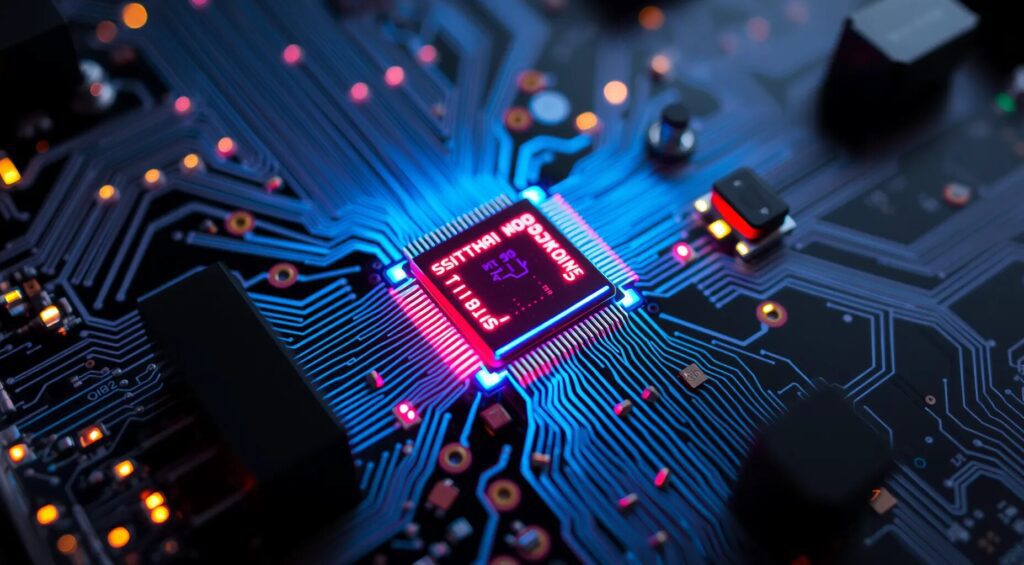
Byzantine failures—complex, unpredictable faults in distributed systems—pose a critical challenge to modern technology. But AI and machine learning (ML) are emerging as powerful allies in predicting and mitigating these errors, ensuring system resilience.
Let’s dive into how these technologies can tackle this elusive problem.
Understanding Byzantine Failures in Distributed Systems
What Are Byzantine Failures?
Byzantine failures occur when components in a distributed system provide conflicting or incorrect information to different parts of the system. This behavior, named after the Byzantine Generals Problem, is particularly insidious because it’s not just a matter of something breaking—it’s about unpredictable, inconsistent faults.
These errors are hard to detect and even harder to correct. They can cripple financial systems, blockchain networks, or critical infrastructures if left unchecked.
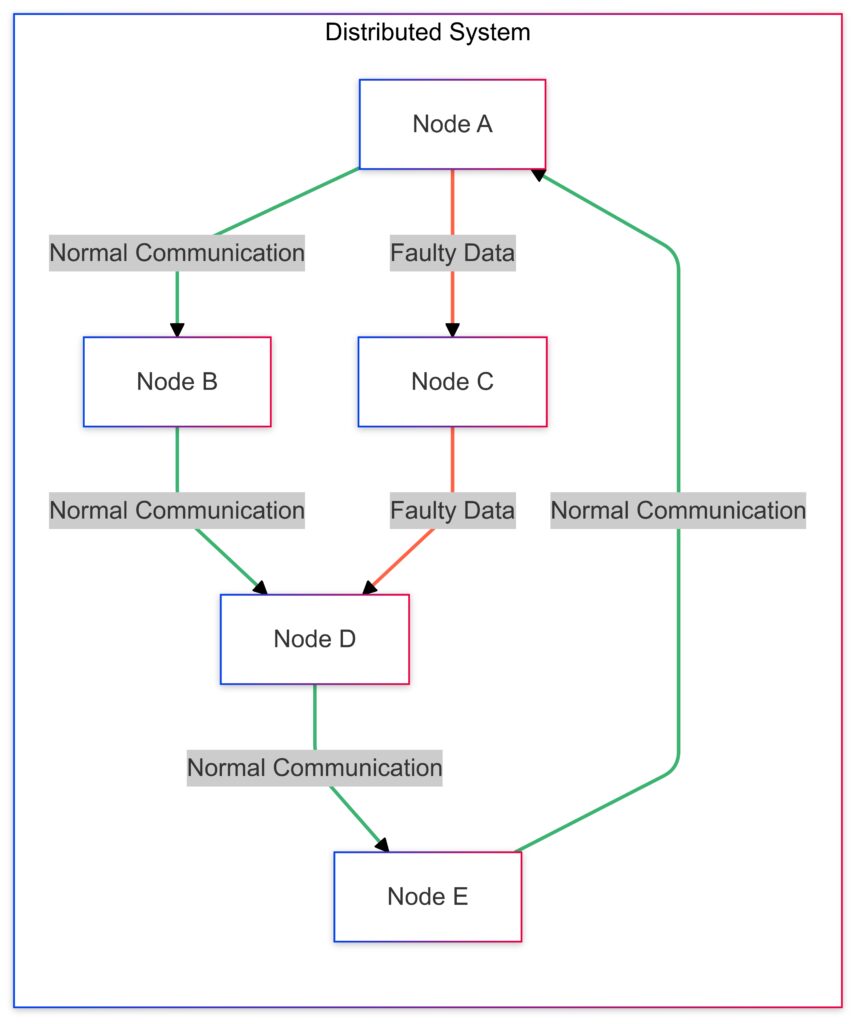
Green Arrows: Represent normal, error-free communication between nodes.
Red Arrows: Highlight faulty or conflicting data flows caused by Byzantine failures.
Real-World Examples of Byzantine Failures
- Blockchain Forks: Conflicting transaction data leads to network splits.
- Cloud System Outages: One faulty node spreading incorrect states across the network.
- IoT Vulnerabilities: Compromised devices acting erratically within smart systems.
Detecting these failures before they wreak havoc is the ultimate goal—and this is where AI shines.
How AI Predicts Byzantine Failures
Pattern Recognition with Machine Learning
Machine learning thrives on data. By analyzing system logs, telemetry data, and past failure records, ML models can identify patterns that signal the onset of Byzantine behavior.
- Time-series analysis detects irregularities in system performance metrics.
- Anomaly detection algorithms, like Isolation Forests or Autoencoders, flag suspicious activities early.
By proactively identifying abnormal patterns, ML-based solutions can warn system administrators before issues spiral out of control.
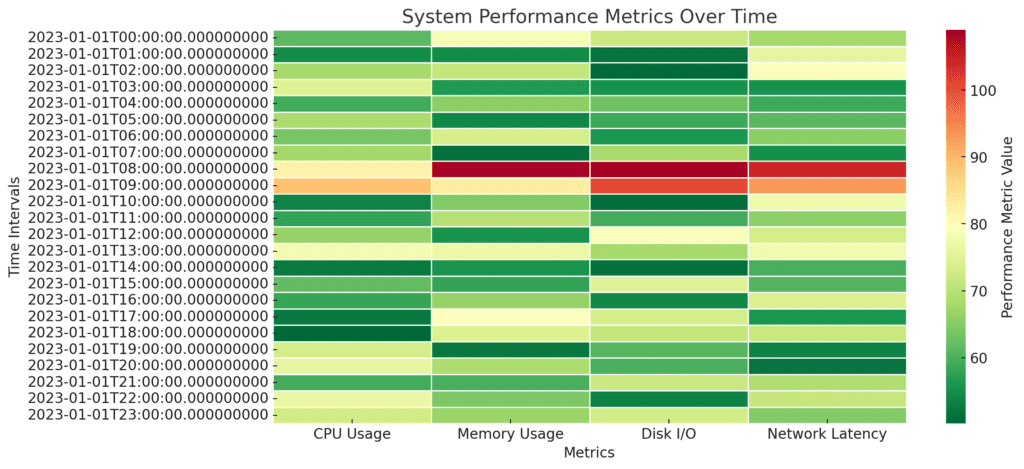
Metrics: Includes CPU usage, memory usage, disk I/O, and network latency.
Color Scale:Green: Indicates normal performance.
Red: Represents anomalies or abnormal behavior.
Anomalies: Clearly visible in specific time intervals (8:00–10:00), suggesting potential issues.
This visualization provides an intuitive overview of system health and can help in pinpointing and addressing anomalies effectively.
Predictive Analytics for Complex Systems
Advanced predictive models can simulate thousands of system interactions to foresee potential failures. Tools like Recurrent Neural Networks (RNNs) or Graph Neural Networks (GNNs) excel here by modeling time-dependent and relational data.
These models empower organizations to preemptively mitigate risks. For instance, blockchain networks can halt malicious nodes before they spread corrupted data.
Decision Tree for Diagnosing Node Failures in a Distributed System:
- System Monitoring: Continuously monitor system health.
- Anomaly Detection:
- No Anomaly: System operates normally.
- Yes Anomaly: Proceed to anomaly analysis.
- Root Cause Identification: Determine if the issue originates from a node failure.
- Node Failure:
- Node Isolation: Isolate the faulty node to prevent system-wide impact.
- Recovery Process: Begin recovery actions for the isolated node.
- Resolution Confirmation:
- Issue Resolved: Return system to normal operation.
- Issue Unresolved: Escalate the problem for manual review.
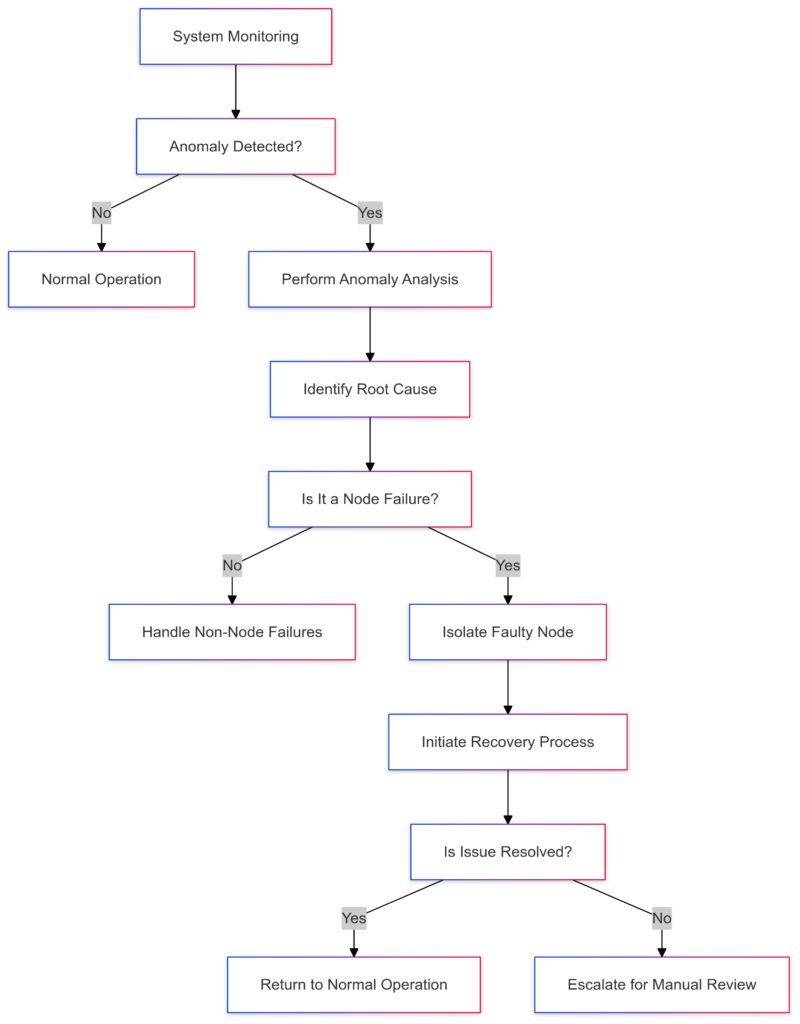
Preventing Byzantine Failures with AI-Powered Solutions
Automated Fault Recovery Mechanisms
AI doesn’t just stop at detection. Reinforcement learning algorithms can optimize system responses in real time. For example:
- Isolating faulty nodes without human intervention.
- Reconfiguring workflows to bypass compromised components.
Such automation reduces downtime and minimizes human error in critical moments.
Enhancing Byzantine Fault Tolerance (BFT) Protocols
BFT protocols like PBFT (Practical Byzantine Fault Tolerance) or Tendermint can integrate AI-driven optimizations. ML models can dynamically adjust protocol parameters, such as node participation thresholds or consensus mechanisms, based on real-time data.
This enhances system robustness against DDoS attacks or malicious insiders.
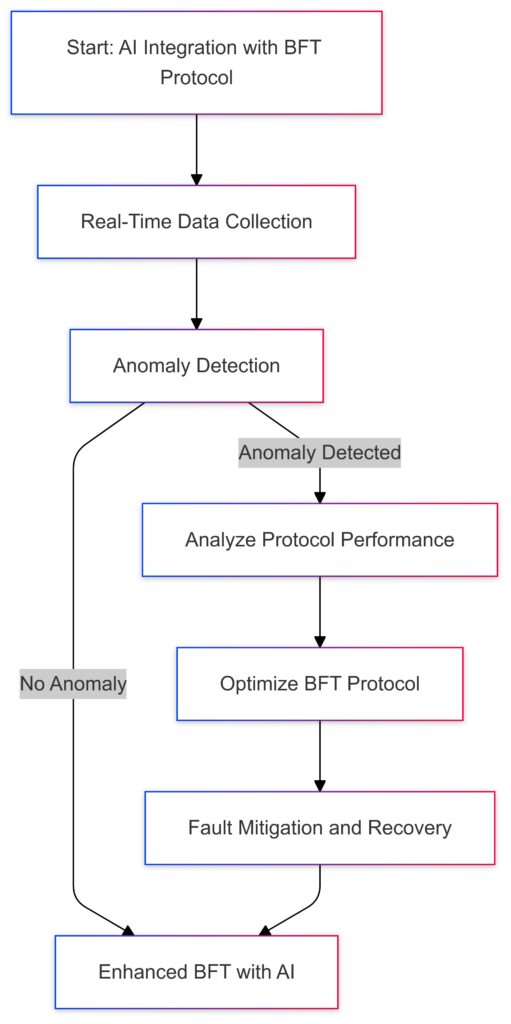
Enhancing Byzantine Fault Tolerance Protocols
A structured approach for improving BFT protocols using AI to ensure robust fault tolerance and optimized system performance
Combining AI and Blockchain for Resilience

Decentralized Intelligence
When AI is embedded within blockchain networks, it creates self-monitoring systems. For example:
- AI monitors blockchain node health in real time.
- Compromised nodes are flagged and sidelined without disrupting the network.
Securing Smart Contracts
Smart contracts can be validated using AI, ensuring their behavior aligns with expected outcomes. ML models analyze historical transaction data to detect deviations.
By merging AI with blockchain technology, we gain an extra layer of protection against Byzantine faults.
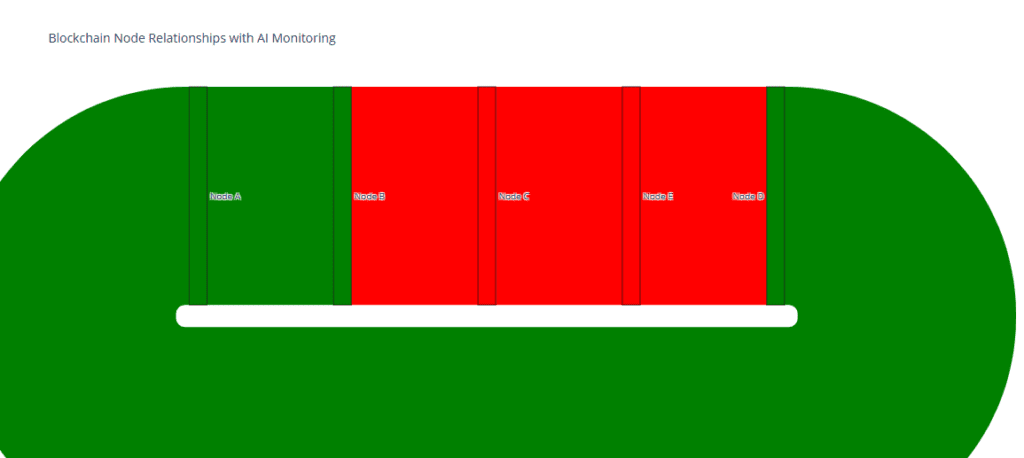
Diagram Structure:
- Nodes (Entities):
- Represent blockchain nodes as segments on the circular boundary.
- Nodes are either healthy (green) or compromised (red).
- Connections (Chords):
- Healthy Links (Green): Connections between healthy nodes.
- Compromised Links (Red): Connections involving at least one compromised node.
- AI’s Role:
- AI isolates compromised nodes by monitoring data flow and identifying anomalies in behavior or communications.
- Highlight isolated nodes with a distinct color or shading.
Real-World Use Cases of AI in Byzantine Failure Prevention
Blockchain Networks: A Case Study
In decentralized systems like Bitcoin or Ethereum, Byzantine failures are a constant threat. AI helps predict and prevent these by:
- Node Health Monitoring: Machine learning tracks network nodes, identifying those showing erratic behavior.
- Consensus Stability Analysis: AI models assess the likelihood of consensus protocol disruptions, preventing costly forks.
For instance, Ethereum’s Beacon Chain could leverage ML for anomaly detection, securing its transition to Proof of Stake (PoS).
Cloud Computing Platforms
Cloud providers like AWS and Azure operate vast, distributed systems. Byzantine failures can cascade through these environments, causing major outages.
AI-driven tools such as AWS Fault Injection Simulator simulate failures to test system resilience. ML-enhanced anomaly detection ensures:
- Proactive Mitigation: Spotting irregularities in resource usage.
- Service Continuity: Redirecting workloads around compromised nodes.
This approach strengthens cloud reliability even under high-stress conditions.
IoT Ecosystems
The Internet of Things (IoT) connects billions of devices, from home appliances to industrial sensors. These systems are vulnerable to Byzantine faults due to their distributed nature and potential for compromised devices.
AI applications here include:
- Edge AI for Local Detection: Devices use lightweight ML models to self-diagnose issues.
- Centralized Learning: Cloud-based AI aggregates data from multiple devices, identifying network-wide anomalies.
For example, a smart factory might use AI to detect and isolate a malfunctioning robot before it disrupts operations.
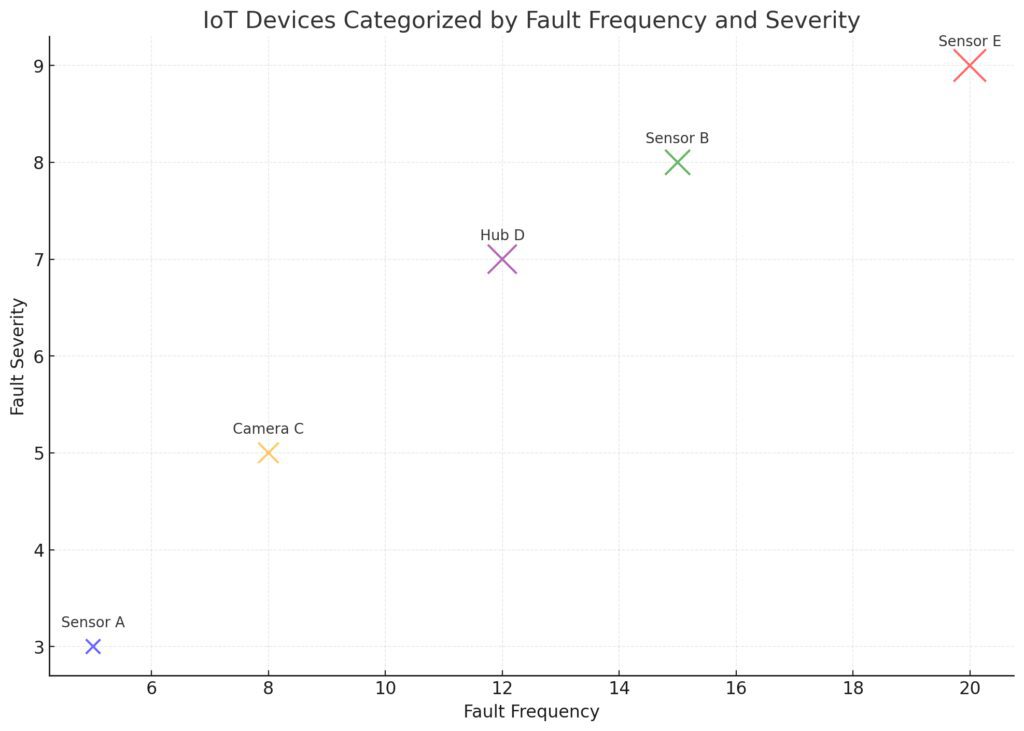
Larger bubbles indicate devices that are more central to the network, emphasizing their importance despite fault issues.
Ethical and Practical Challenges
Balancing Accuracy and Complexity
AI systems trained to detect Byzantine failures must balance accuracy with computational efficiency. Overly complex models may slow down real-time detection, undermining their utility in fast-paced environments like blockchains.
Avoiding False Positives
Anomaly detection algorithms must be fine-tuned to avoid false positives. Otherwise, they risk sidelining healthy nodes or overloading administrators with unnecessary alerts.
Data Privacy Concerns
ML models often require access to detailed system logs. In blockchain or IoT environments, this may raise privacy concerns. Developers must ensure compliance with GDPR or HIPAA, depending on the system.
Algorithmic Bias
AI models may inadvertently favor certain components or protocols over others. Careful model validation is essential to ensure fairness across all nodes or devices.
The Future of AI-Driven Byzantine Fault Tolerance
Self-Healing Networks
The next generation of distributed systems will likely feature self-healing capabilities. By integrating AI into every layer of the stack, systems can detect, diagnose, and recover from Byzantine failures autonomously.
Federated Learning for Decentralized Insights
In blockchain and IoT, federated learning enables AI models to learn collaboratively without sharing sensitive data. This ensures robust Byzantine failure detection while preserving user privacy.
AI-Augmented Consensus Mechanisms
Future blockchain protocols might rely on AI-enhanced consensus algorithms, where machine learning continuously refines the voting mechanisms. This could eliminate the need for fixed thresholds, adapting dynamically to changing conditions.
AI and machine learning are transforming how we approach Byzantine failures. With advancements in predictive analytics, automated fault recovery, and self-healing systems, distributed networks can operate with unprecedented resilience.
From blockchains to IoT ecosystems, the integration of AI promises a more secure, reliable digital future. The only question now is: how quickly will industries adopt these groundbreaking solutions?
FAQs
Are AI-based solutions scalable for large systems?
Yes, AI-based solutions are highly scalable, especially with the use of cloud-based infrastructure and edge computing. Federated learning models, for example, allow distributed systems like IoT networks to collaboratively detect faults without overwhelming central servers.
What are the risks of relying on AI for Byzantine failure prevention?
Some risks include false positives, where the system may incorrectly flag healthy components, and over-reliance on AI, which could lead to complacency in human oversight. Additionally, privacy concerns and potential biases in AI models must be managed carefully.
How do AI and blockchain complement each other in fault prevention?
AI enhances blockchain networks by monitoring node health, predicting failures, and optimizing consensus mechanisms. In return, blockchain ensures data integrity for AI models, creating a symbiotic relationship that bolsters system resilience against Byzantine failures.
Is AI suitable for smaller distributed systems?
AI solutions can be tailored for smaller systems, often using lightweight algorithms and models. For instance, edge AI can detect anomalies locally without needing extensive computational resources, making it ideal for smaller setups.
What industries benefit the most from AI-based Byzantine failure prevention?
Industries reliant on distributed systems, such as finance (blockchain), cloud computing, IoT, and telecommunications, benefit significantly. These sectors face high stakes for system reliability, making AI-driven solutions crucial for maintaining uptime and security.
Can AI detect Byzantine failures in real-time?
Yes, AI excels at real-time detection using streaming data analysis and time-series anomaly detection. Tools like RNNs or Long Short-Term Memory (LSTM) networks analyze ongoing operations, flagging irregularities before they escalate into major failures.
How does federated learning contribute to Byzantine failure prevention?
Federated learning allows multiple systems or devices to train a shared AI model without transferring sensitive data. This decentralized approach is especially useful in blockchain networks and IoT ecosystems, enabling fault detection across distributed nodes while maintaining privacy.
Do AI-based systems require specialized hardware for fault prevention?
Not necessarily. While large-scale systems may benefit from GPU acceleration or dedicated AI chips, smaller implementations can run on standard hardware using lightweight models. Technologies like edge AI make it possible to deploy solutions on low-power devices.
How does AI handle malicious actors in Byzantine scenarios?
AI models can identify malicious actors by recognizing patterns of deviant behavior, such as sending inconsistent or corrupted data. Once flagged, these nodes can be quarantined or excluded from the system’s operations, limiting their impact.
Can AI optimize existing Byzantine Fault Tolerance protocols?
Absolutely. AI can analyze historical performance data and adaptively fine-tune protocol parameters, such as adjusting quorum thresholds or modifying consensus algorithms. This makes BFT protocols more efficient and responsive to changing conditions.
How does anomaly detection prevent cascading failures?
Anomaly detection identifies irregularities at the earliest stage, stopping the spread of faults before they cascade through the system. By isolating or correcting the source of the issue, AI minimizes the risk of widespread disruptions.
What are the costs associated with implementing AI for Byzantine fault prevention?
Costs depend on system complexity and the scale of deployment. Initial investments may include training machine learning models, integrating AI platforms, and acquiring necessary infrastructure. However, the long-term savings from reduced downtime and system failures often outweigh these expenses.
How does AI handle Byzantine failures in mission-critical systems?
In mission-critical systems like aerospace or healthcare, AI plays a proactive role by performing real-time monitoring, predictive failure analysis, and automated recovery. These systems often use redundancy and failover mechanisms enhanced by AI for extra resilience.
Are there open-source tools for AI-based Byzantine fault detection?
Yes, several open-source frameworks and libraries support AI-based fault detection, including TensorFlow, PyTorch, and specialized anomaly detection tools like PyCaret or Scikit-learn. These tools can be customized for detecting Byzantine faults in distributed systems.
How does AI integrate with traditional monitoring tools for Byzantine failure prevention?
AI can seamlessly integrate with existing monitoring systems, enhancing their capabilities. For example, traditional tools like Nagios or Prometheus can feed system logs and metrics into AI models, which analyze the data for deeper insights and early detection of Byzantine anomalies.
What makes Byzantine failures harder to detect than other system faults?
Byzantine failures are particularly challenging because they involve inconsistencies in communication or behavior across nodes. Unlike standard faults, they don’t always appear as clear-cut errors. AI’s ability to uncover subtle patterns and anomalies makes it uniquely suited to tackling this complexity.
Can reinforcement learning help prevent Byzantine failures?
Yes, reinforcement learning (RL) is especially effective for developing dynamic strategies to respond to faults. RL models learn from interactions within the system, improving their ability to mitigate failures over time. For instance, RL could help optimize how nodes are reconfigured after a failure.
How do AI-driven solutions ensure scalability for Byzantine fault tolerance?
AI achieves scalability through techniques like distributed computing and parallel processing. For example, federated learning enables fault detection across thousands of devices or nodes without overloading a central processor. This approach ensures systems can handle growth without performance degradation.
Can AI predict failures caused by insider threats?
Yes, AI can detect insider threats by identifying abnormal behavior patterns, such as unusual access requests or inconsistent transaction data. These insights are invaluable in distributed systems like financial networks or blockchain, where insider threats can lead to Byzantine-like issues.
What kind of data does AI need to predict Byzantine failures?
AI typically requires diverse data inputs, including:
- System logs: Historical and real-time logs for pattern analysis.
- Performance metrics: Data on node or device health, latency, and throughput.
- Transaction histories: For detecting inconsistencies in blockchain or financial systems.
The more comprehensive the data, the more accurate the predictions.
How does AI ensure system reliability in large-scale IoT networks?
AI uses edge computing and hierarchical monitoring to maintain reliability in IoT systems. Edge devices can independently detect anomalies locally, while centralized AI coordinates the broader network to isolate and resolve Byzantine issues efficiently.
What industries are leading in the adoption of AI for Byzantine failure prevention?
Industries at the forefront include:
- Blockchain and cryptocurrency: Ensuring consensus integrity and securing smart contracts.
- Cloud services: Preventing outages and optimizing resource allocation.
- Telecommunications: Maintaining reliability in distributed communication networks.
- Energy and utilities: Detecting faults in smart grids or distributed energy systems.
How can AI help in regulatory compliance for systems prone to Byzantine failures?
AI aids compliance by maintaining detailed logs of detected anomalies and their resolutions. These records help organizations meet standards for audit trails, fault tolerance, and system security, which are essential for industries like finance and healthcare.
Are there future technologies that could work alongside AI to further prevent Byzantine failures?
Yes, emerging technologies like quantum computing and blockchain analytics could complement AI. Quantum algorithms may enhance fault detection speeds, while advanced blockchain tools could provide deeper insights into decentralized systems, creating a multi-faceted defense against Byzantine failures.
Resources
Research Papers and Articles
- “Byzantine Fault Tolerance: From Theory to Practice”
Explores foundational concepts and practical implementations of BFT protocols.
Read it on SpringerLink - “AI-Driven Fault Detection in Distributed Systems”
A deep dive into how machine learning enhances fault detection in large-scale distributed systems.
Access via IEEE Xplore - “Using Machine Learning to Detect Anomalies in IoT Networks”
Focuses on AI solutions for IoT, including edge AI applications.
Available on ACM Digital Library
Tools and Frameworks
- TensorFlow and PyTorch
Widely used machine learning libraries for building anomaly detection and prediction models.
TensorFlow | PyTorch - Prometheus and Grafana
Open-source monitoring tools that integrate with AI systems for advanced fault detection.
Prometheus | Grafana - Fault Injection Simulators
Tools like AWS Fault Injection Simulator let you simulate and test Byzantine fault scenarios.
AWS Fault Injection Simulator
Industry Blogs and Websites
- Distributed Systems Blog by Martin Kleppmann
Covers distributed systems concepts, including challenges like Byzantine failures. - AI in Blockchain by ConsenSys
Discusses how AI enhances blockchain security and fault tolerance.
Read More - The IoT Security Blog by Cisco
Regular updates on AI’s role in securing IoT networks, including Byzantine fault scenarios.
Courses and Tutorials
- “Machine Learning for Systems Reliability” (Coursera)
Learn how to apply ML techniques to system monitoring and fault tolerance.
Enroll Here - “Distributed Systems Crash Course” (Udemy)
Understand the basics of distributed systems, including fault tolerance concepts.
Start Learning - “Blockchain Essentials” (IBM SkillsBuild)
Free course covering blockchain technology and its security challenges.
Learn More


